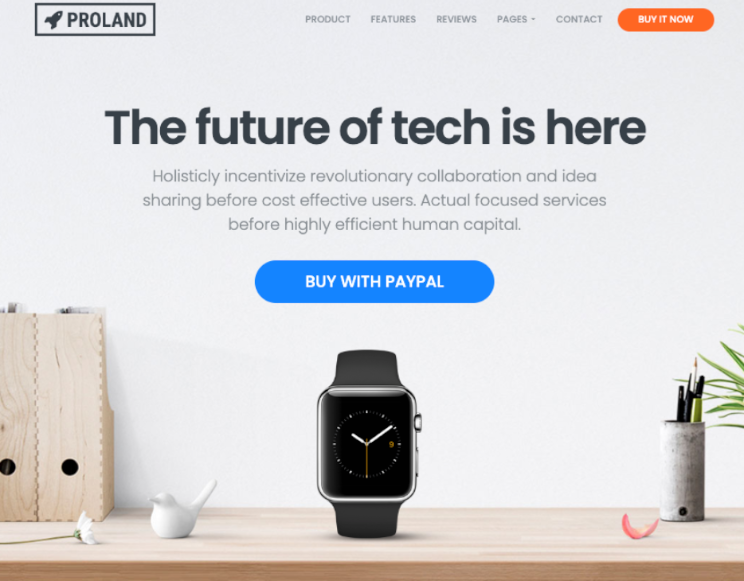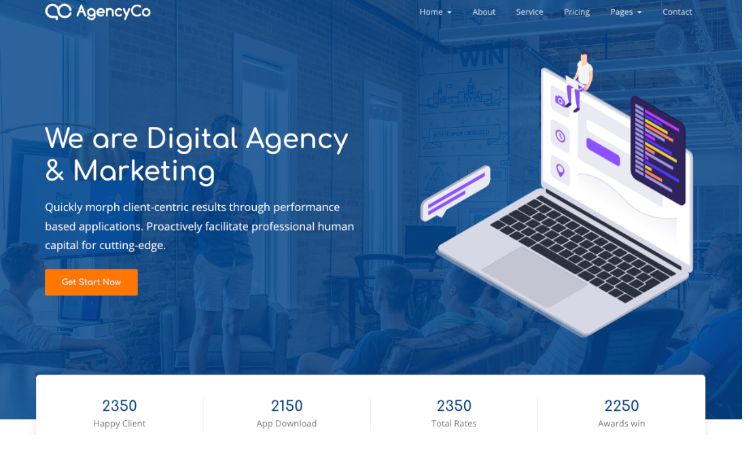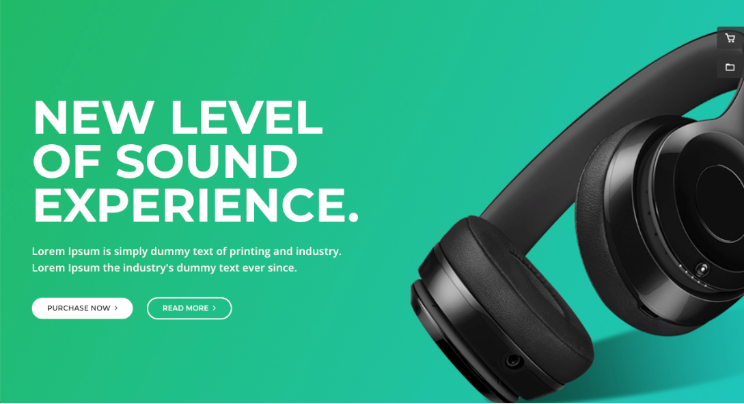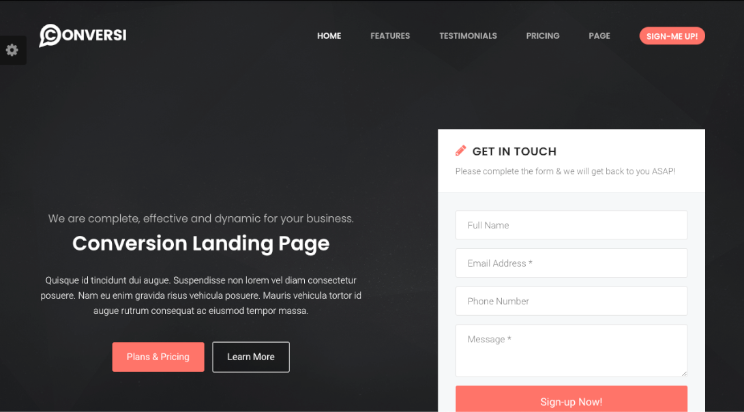At a time when competition for clicks is at an all-time high, having a well-crafted PPC landing page is essential for any successful ad campaign. The landing page is the first page that a visitor sees after clicking on an ad, and it’s where they decide whether to stay or click away. So, PPC landing page design is critical, and a good landing page should be enticing and provide relevant content to the visitor.
That’s why having the right PPC landing page template is so important. A template simplifies the process of creating landing pages for PPC that are attractive and informative. It eliminates the need to create custom content or design a page from scratch. Here is some helpful information about creating effective PPC landing pages and how to use the best landing page template to meet your goals.
What makes a good PPC landing page template?
A PPC (pay-per-click) landing page is a webpage designed to capture leads from paid search campaigns. You pay for each click you get, as the name suggests.
Users are directed to an independent webpage following their interaction with a pay-per-click advertisement. This landing page layout is designed to be the first page a user sees when clicking on an ad, and typically includes a form for capturing contact information or converting visitors into customers. Because they are such strong lead capture and conversion tools, you should be sure to include a strong and concise call to action.
The design of a landing page is especially important here because you have (on average) less than 10 seconds to communicate value to visitors before they abandon your site. The right template can help you reap the benefits of your PPC landing page. A well-designed landing page should be engaging and designed with easy navigation in mind to drive conversions.
Your PPC landing page should be optimized for desktop and mobile
Did you know that nearly 60% of web traffic comes from mobile devices like phones and tablets? A mobile-friendly landing page is no longer exceptional; for most web users, it’s an expectation.
Mobile-friendly landing pages are an essential part of ensuring that your PPC landing pages are driving conversions and getting in front of a range of users. Before you ask, no, being able to open a webpage on your phone is not enough to call it mobile-friendly. A mobile-friendly webpage is easy to view and navigate on your phone with little manipulation needed (like excessive zooming or scrolling).
This ensures that users have a seamless, positive experience no matter how they view your content, so ensure that the template you use is fast-loading and responsive to mobile users. Creating a PPC landing page that can be opened on a range of devices not only helps with lead capture but also helps to improve search engine rankings, as search engines prioritize mobile-friendly websites.
The landing page layout should be designed with PPC in mind
If you are paying for your PPC landing page to be integrated with your advertising budget, you should ensure that it follows the best practices for PPC landing pages to narrow your funnel and convert leads.
Any landing page that is looking to increase SEO and make itself navigable should have clear, concise, and action-packed headlines and subheadings. This makes it easy for users to skim your landing pages, which research has shown is the preferred reading method for an overwhelming majority of web users. Be sure that your headlines, subheadings, and meta descriptions are all relevant to your content, or you may see a high bounce rate.
Coupling your headlines and subheadings with CTAs maximizes the opportunity for you to drive action on your PPC landing page. Calls to action should be specific to a targeted action you want your users to take. The more specific your CTA, the better.
Finally, don’t overlook the importance of the PPC landing page’s design! Designing your PPC landing pages with navigability in mind is an important part of seeing results from your PPC campaigns. The easier your landing page is to navigate, the more likely it is that users will take action. Design can affect bounce rates and the likelihood that users will engage with CTAs.
A microsite is better for longer campaigns than PPC landing pages
While landing pages are great conversion tools that have narrow funnels, they may be too narrow in scope for some content or projects. This is especially true if your target audience is still looking to explore the details of your product or service. On the other hand, directing those “in-between” users back to your website may not be tailored enough, resulting in site visits that don’t convert.
The happy middle ground between a landing page and a website is a microsite. It is still narrow enough in its approach that content is tailored for specific campaign purposes, but includes the same robust elements of a website so you can create content for a longer-lasting, more robust campaign.
Microsites are fully immersive content experiences that have their own unique URL and subpages. This increases SEO visibility while allowing your content to become as a niche to your campaign as you’d like without sacrificing the consistency of your branding efforts.
The beauty of a microsite is that it also offers the flexibility of incorporating more conversion-driving elements than a standalone landing page. You can incorporate contact forms, more CTA buttons, and engaging media content that would otherwise clutter a single landing page.
Best PPC landing page templates you can use

The simple, clean text takes the center stage here with a clear CTA that is housed inside of a button feature. This makes it easy for your visitors to focus on what matters most: the featured product. This template also features a neat scroll feature that moves across new sections that contain their own CTAs so you can convert across the entirety of your landing page.

The playful rounded font is only the start of this playful template that includes animated graphics and plenty of opportunities to incorporate other media. We love that the bottom of the template includes space for other metrics that can convert leads, too!

We love that this template is image-forward. It is the perfect way to highlight a product or branding image that grabs users’ attention. The large heading is accompanied by a short text block, which makes it easy to jump right to the CTA down below.

Tried and true works, too! This simple landing page starts working on converting leads right away with a contact form and CTA button front and center. The stark contrast between the CTAs and the plain background immediately moves eyes toward lead conversion elements.
Go beyond PPC Ad landing pages with Zoomforth microsites
Landing pages are vital to PPC campaigns, but if you’re looking to do more, resting a rounded experience that is hyper-focused is easy with a microsite. However, not all microsite tools are the same!
Zoomforth makes it easy to create a microsite that is as tailored as a standalone landing page with the full features and tools of a website. Drag-and-drop editing tools make it easy to create content from a template that is fully customized with your own branding and graphics. Zoomforth also has robust insight and analytic tools that make it easy for you to track and measure the success of your microsite.
Want to find out if a microsite is a right fit for your campaign? Try a free demo of Zoomforth today!
Photo by Austin Distel on Unsplash



